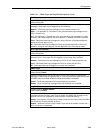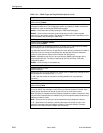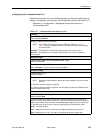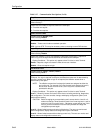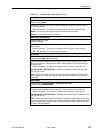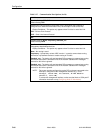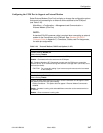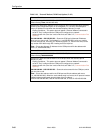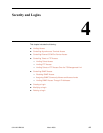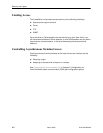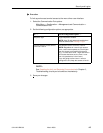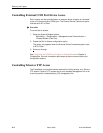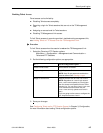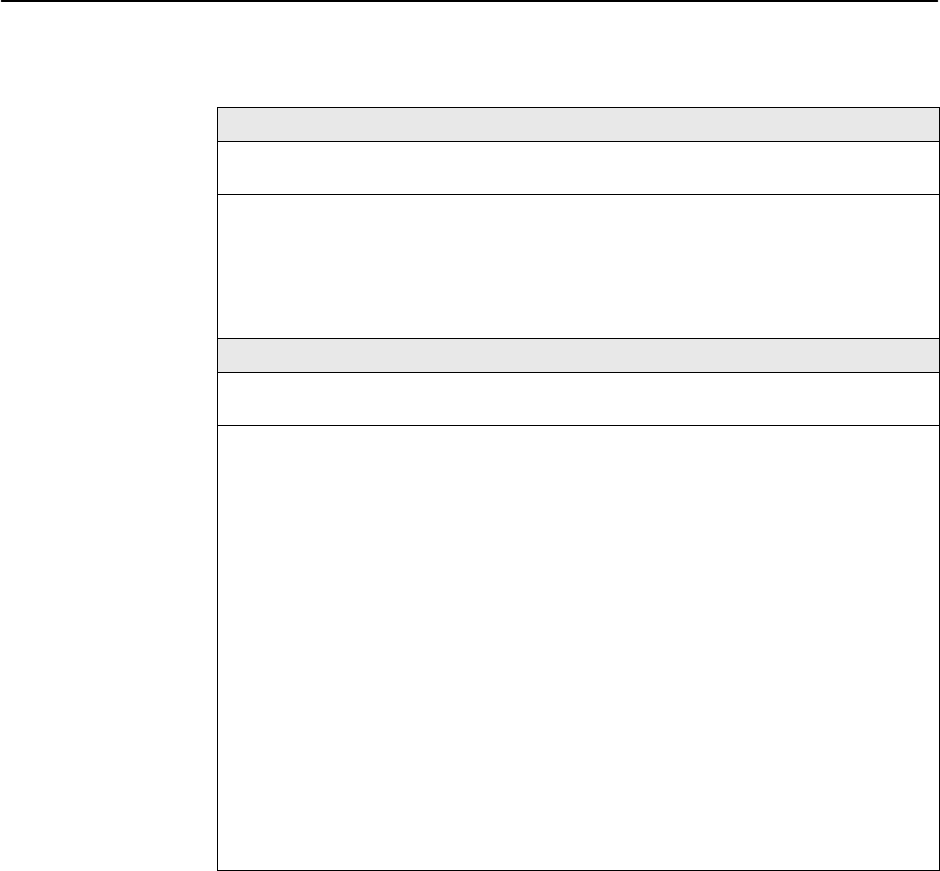
Configuration
3-66
9124-A2-LB20-00
March 2000
Table 3-17. Communication Port Options (4 of 4)
Link Protocol
Possible Settings: PPP, SLIP
Default Setting: PPP
Specifies the link-layer protocol to be used. Only in effect when the COM port is
configured as a network communication link (Port Use option is set to Net Link).
Display Conditions – This option only appears when Port Use is set to Net Link.
PPP – Point-to-Point Protocol.
SLIP – Serial-Line Internet Protocol.
RIP
Possible Settings: None, Proprietary, Standard_out
Default Setting: None
Specifies which Routing Information Protocol (RIP) is used to enable routing of
management data between devices.
Display Conditions – This option only appears when Port Use is set to Net Link.
None – No routing is used.
Proprietary – A proprietary variant of RIP version 1 is used to communicate routing
information only between devices to enable routing of IP traffic.
Standard_out – The device will send standard RIP messages to communicate routing
information about other FrameSaver units in the network. Standard RIP messages
received on this link are ignored.
Standard_out – The device will send standard RIP messages to communicate routing
information about other FrameSaver units in the network. Standard RIP messages
received on this link are ignored.
NOTE: The router must be configured to receive RIP on the port connected to the
COM port, configured as the management interface (e.g., Cisco:
config-t, router RIP, int serialx, IP RIP Receive
version 1, ctl-z WR).
To create this management interface, make sure that Node or COM port IP
Information has been set up (Configuring Node IP Information).






